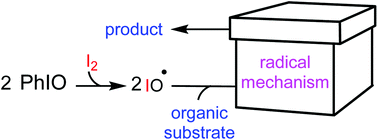How the combination of PhIO and I2 provides a species responsible for conducting organic reactions through radical mechanisms†
Abstract
A combination of iodosobenzene (PhIO) and molecular iodine (I2) is well-documented to produce a key species capable of conducting various organic reactions through radical mechanisms. This key species is identified here by density functional theory (DFT) calculations to be the hypoiodite radical (IO˙). The calculations show that two equivalents of IO˙ are generated when I2 reacts with two equivalents of PhIO. One of the ensuing IO˙ species acts as a hydrogen abstractor and thus forms an organic radical and the other one is involved in oxidation of the resultant organic radical to afford the final product.

- This article is part of the themed collection: Mechanistic, computational & physical organic chemistry in OBC


 Please wait while we load your content...
Please wait while we load your content...